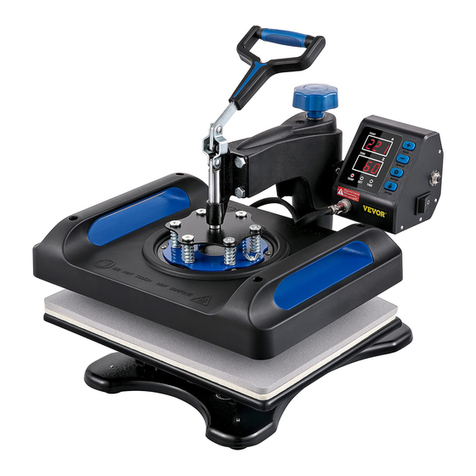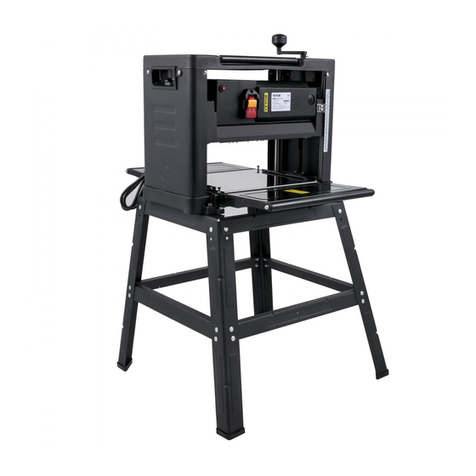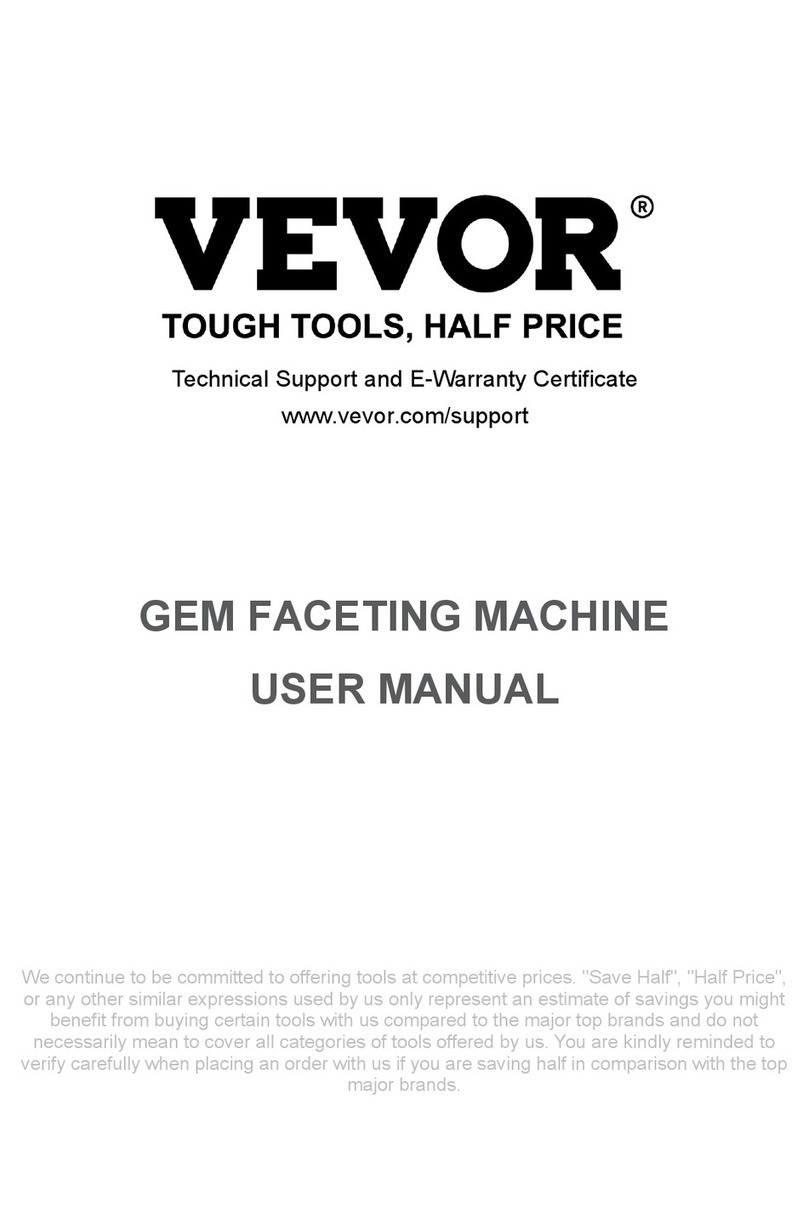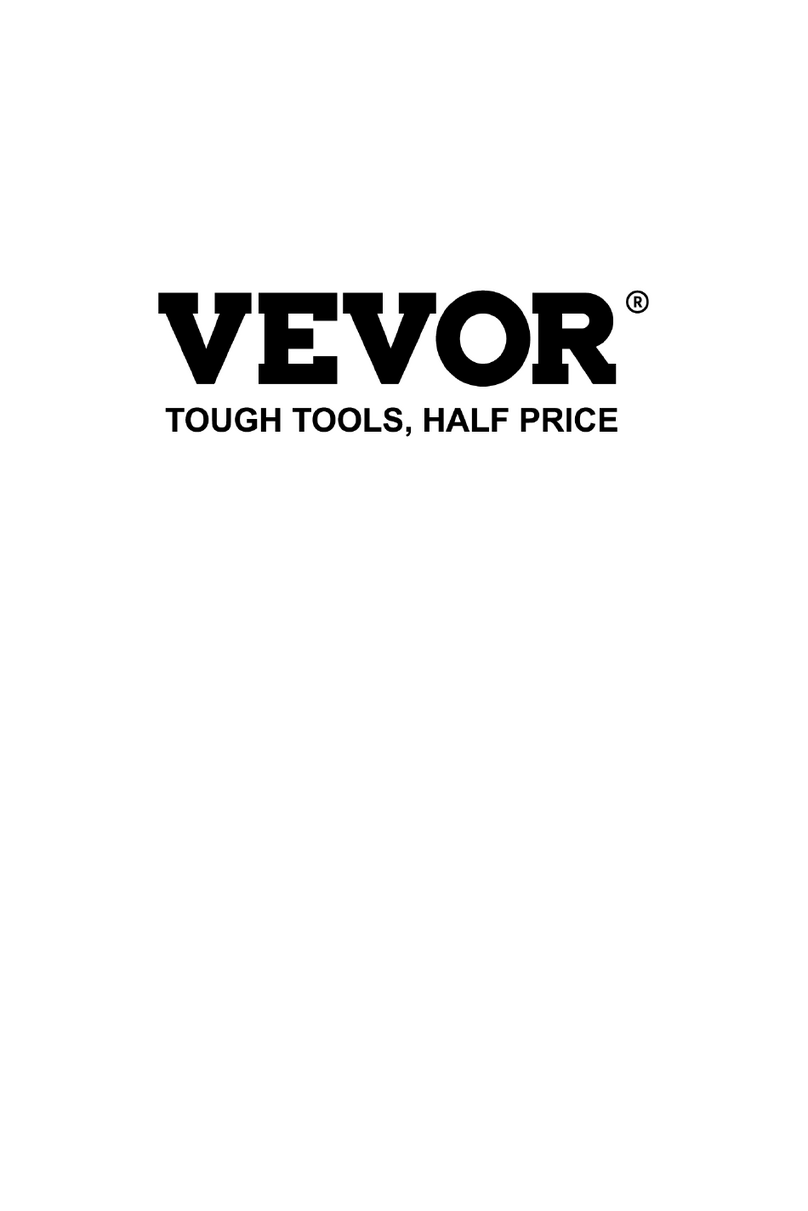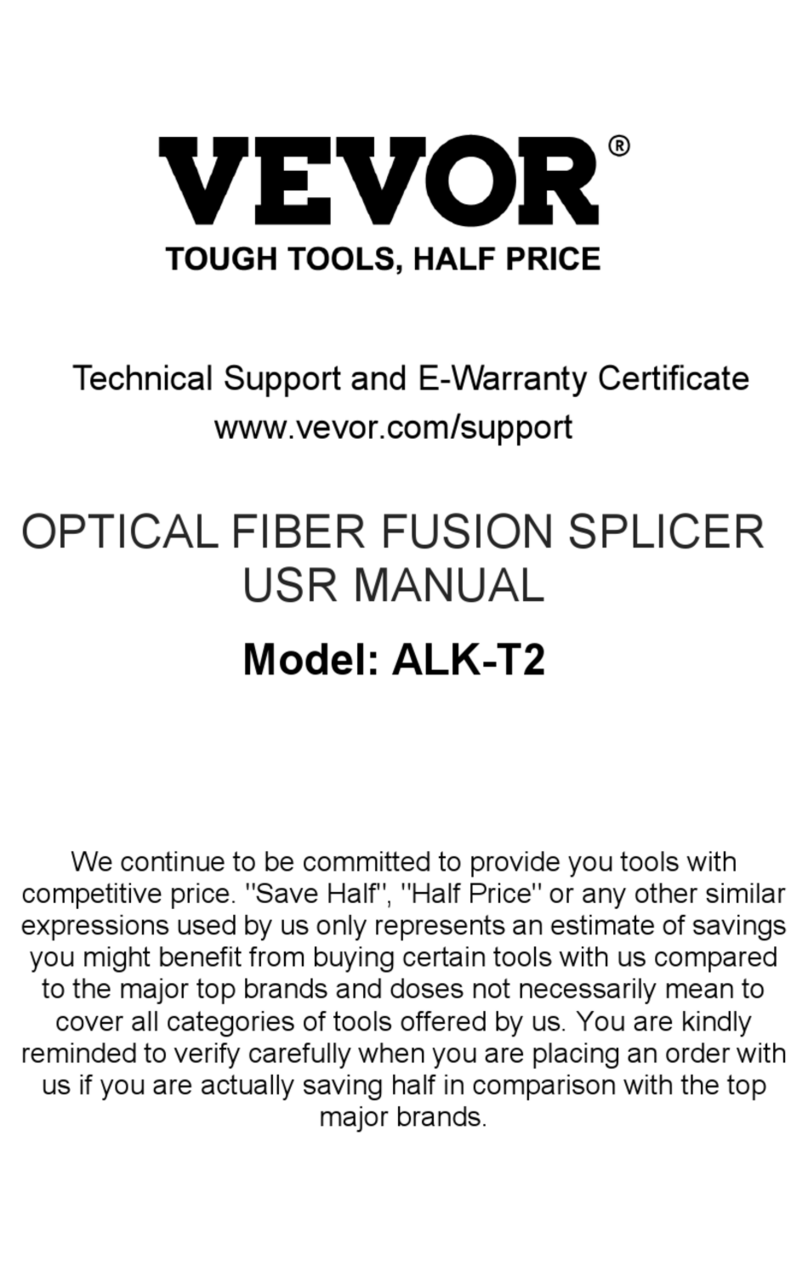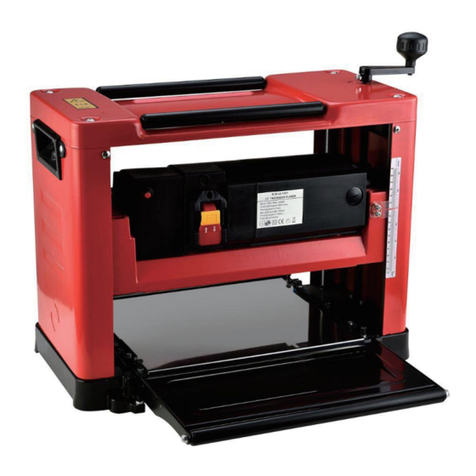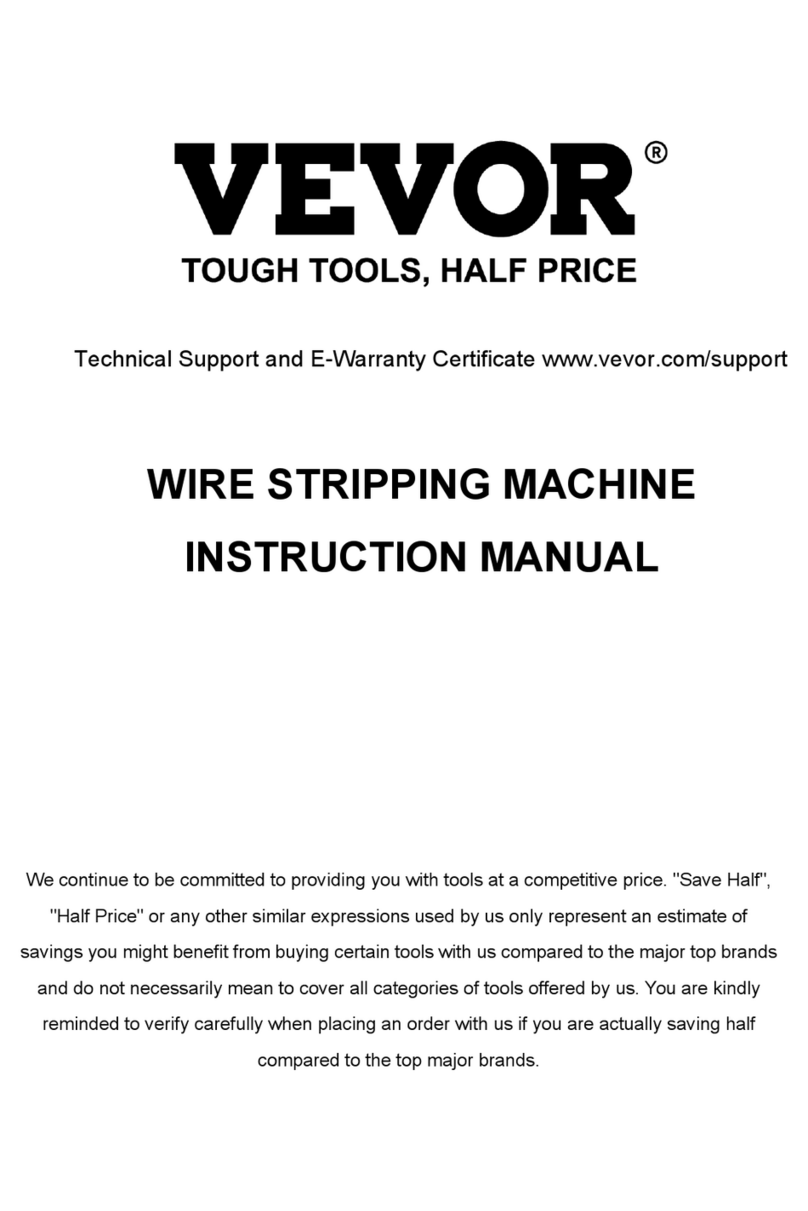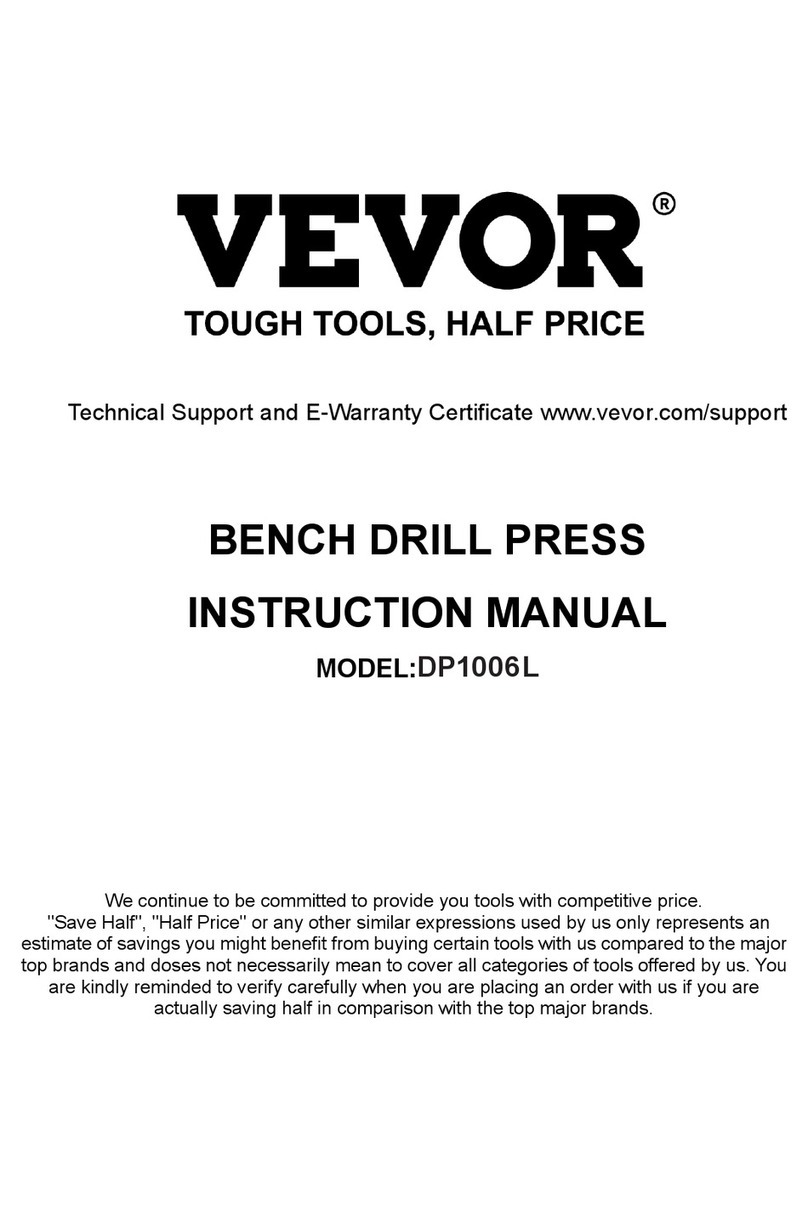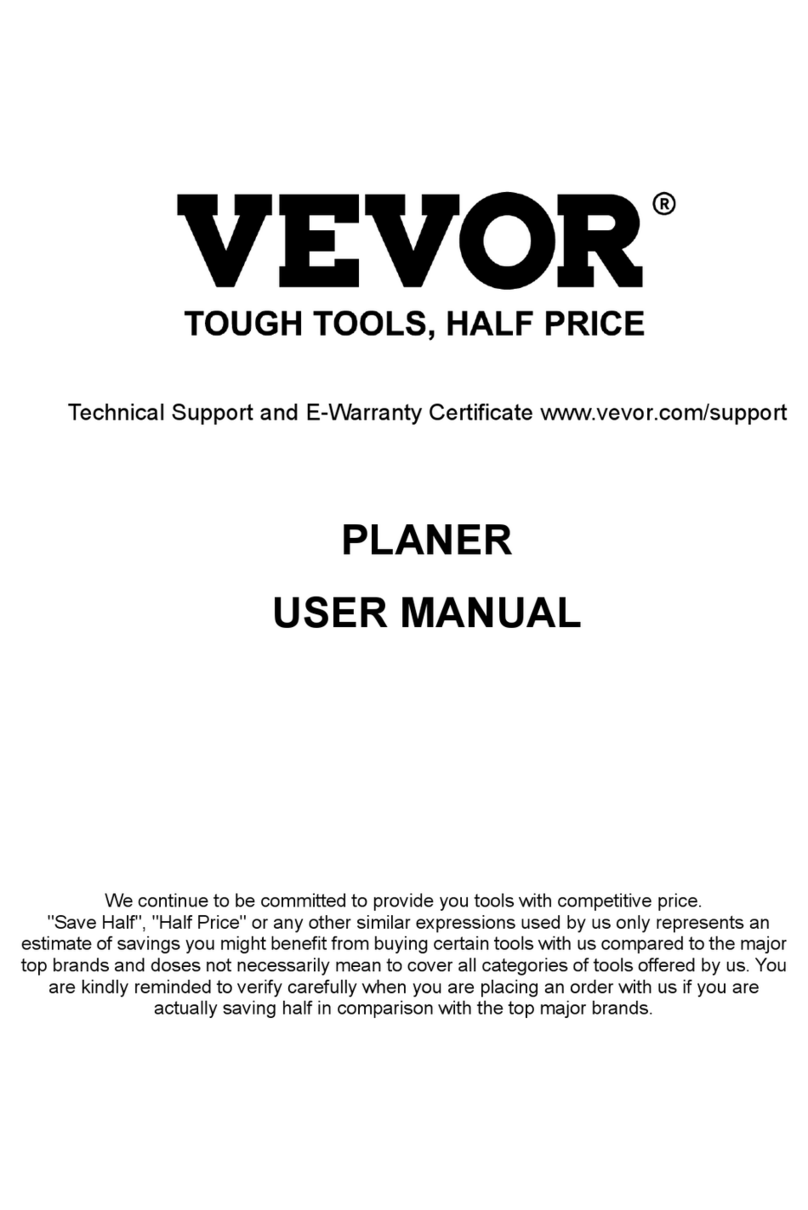
4) POWER TOOL USE AND CARE
a) Do not force the power tool. Use the correct power tool for your application. The correct power tool will do the
job better and safer at the rate for which it was designed.
b) Do not use the power tool if the switch does not turn it on and off. Any power tool that cannot be controlled with
the switch is dangerous and must be repaired.
c) Disconnect the plug from the power source and/or the battery pack from the power tool before making any
adjustments, changing accessories, or storing power tools. Such preventive safety measures reduce the risk of
starting the power tool accidentally.
d) Store idle power tools out of the reach of children and do not allow persons unfamiliar with the power tool or
these instructions to operate the power tool. Power tools are dangerous in the hands of untrained users.
e) Maintain power tools. Check for misalignment or binding of moving parts, breakage of parts and any other
condition that may affect the power tool’s operation. If damaged, have the power tool repaired before use. Many
accidents are caused by poorly maintained power tools.
f) Keep cutting tools sharp and clean. Properly maintained cutting tools with sharp cutting edges are less likely to
bind and are easier to control.
g) Use the power tool, accessories and tool bits etc., in accordance with these instructions taking into account the
working conditions and the work to be performed. Use of the power tool for operations different from those
intended could result in a hazardous situation.
5) BATTERY TOOL USE AND CARE
a) Recharge only with the charger specified by the manufacturer. A charger that is suitable for one type of battery
pack may create a risk of fire when used with another battery pack.
b) Use power tools only with specifically designated battery packs. Use of any other battery packs may create a
risk of injury and fire.
c) When battery pack is not in use, keep it away from other metal objects like paper clips, coins, keys, nails,
screws, or other small metal objects that can make aconnection from one terminal to another. Shorting the battery
terminals together may cause burns or a fire.
d) Under abusive conditions, liquid may be ejected from the battery, avoid contact. If contact accidentally occurs,
flush with water. If liquid contacts eyes, additionally seek medical help. Liquid ejected from the battery may cause
irritation or burns.
6) SERVICE
a) Have your power tool serviced by a qualified repair person using only identical replacement parts. This will
ensure that the safety of the power tool is maintained.
Additional Specific Safety Instructions for Adhesive Guns
• Hold tool by insulated gripping surfaces when performing an operation where the cutting tool may contact hidden
wiring or its own cord. Contact with a "live" wire will also make exposed metal parts of the tool "live" and shock the
operator.
• Keep hands out of the plunger and plunger rod area of the caulk/adhesive gun. Fingers can be crushed between the
tube holder and the plunger.
• When operating the caulk/adhesive gun overhead, do not have plunger rod in the path of your eyes or head. Plunger
rod may slip back in direction of user. Always wear eyeprotection when using the caulk/adhesive gun.
• Always work in properly ventilated area and wear appropriate respiratory protection if necessary. Fumes from some
caulks and adhesives can be noxious.
• Turn unit off and disconnect battery pack before installing and removing accessories, before adjusting or when
making repairs. An accidental start-up can cause injury.
• Use only accessories that are recommended by the manufacturer for your model. Accessories that may be suitable
for one tool may be hazardous when used on another tool. The use of improper accessories may cause risk of injury
to persons.
